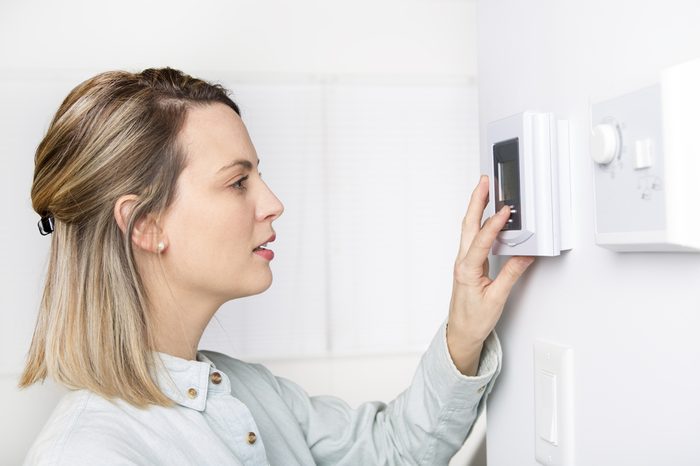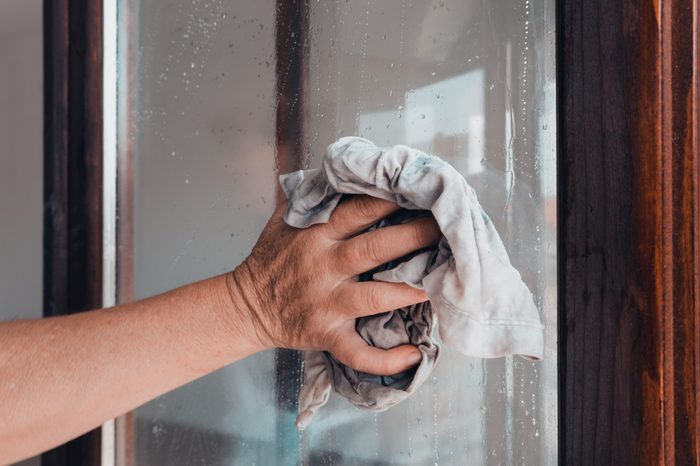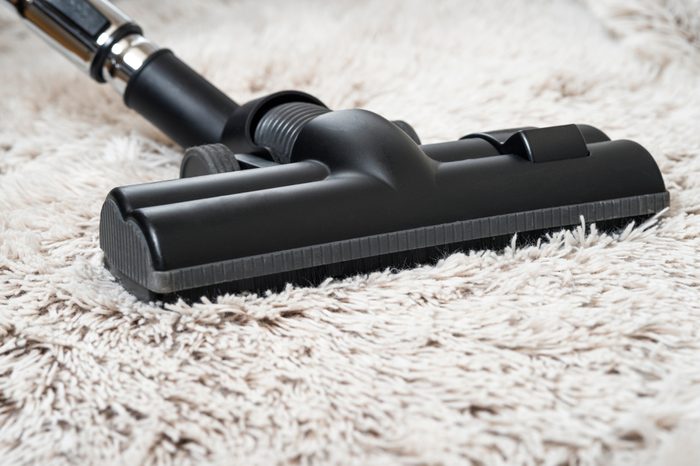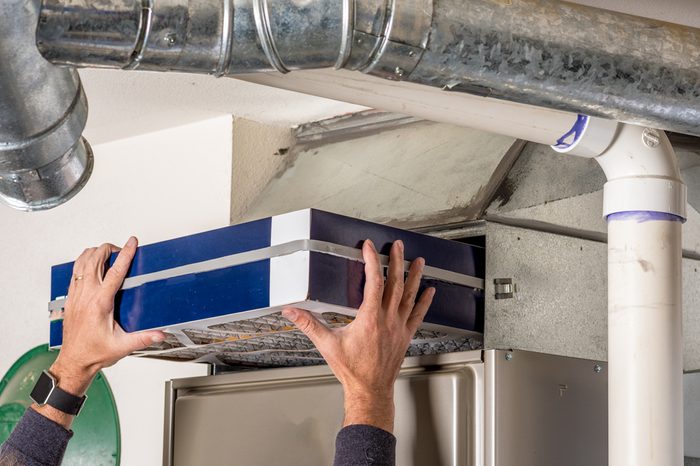
Organize your closets to keep dust to a minimum
Closets are a dust haven, full of tiny fibers from clothes, towels, and bedding. And every time you open the door, you whip up an invisible dust storm. You can’t prevent clothes from shedding fibers, but you can make closets easier to keep clean, which will vastly cut down on dust. How to get rid of dust in your closet? Box or bag items on shelves, preferably in clear plastic containers—they lock fibers in, keep out dust, and allow you see what’s inside. Plus, when you dust, they’re easy to pull off the shelves and wipe clean. Keep coats in garment bags. And finally, keep your closet floors clear. If the floor is cluttered, chances are you’ll just bypass it while vacuuming, and dust bunnies will start to collect. Here is how your house might be making you sick.

Change your bedding every week
Your cozy bed is a major dust distributor, and that dust can multiply like bunnies if you don’t keep on it. That’s because your bedding collects skin flakes, sheds its own fibers, and sends out a puff of dust every time you roll over. To minimize the fallout, wash sheets and pillowcases weekly. Items that aren’t machine washable don’t need weekly trips to the dry cleaners—just take blankets and bedspreads outside and shake them down. You can smack some of the dust out of pillows, but for a thorough cleaning, wash or dry-clean them.

Clean the air while you clean the house
Working smarter, not harder, is how to get rid of dust. All vacuums whip up dust with their “agitator” (the cylindrical brush that sweeps the carpet) or blowing exhaust stream. That dust eventually settles on the surfaces you’ve just cleaned. But you can filter out some of that dust before it settles by switching your thermostat to “fan on.” This turns on the blower inside your furnace and filters the air even while the system isn’t heating or cooling. Leave the blower on for about 15 minutes after you’re done cleaning, but don’t forget to switch back to “auto.” Most blowers aren’t designed to run constantly. Learn what air pollution really does to your body.

Use the right cleaning supplies
The key is to capture dust, not just spread it around. Problem is, that’s exactly what feather dusters and dry rags do. A better option: Damp rags or disposable cloths, which attract and hold dust with an electrostatic charge (like Swiffer or Grab-it). Cloths that attract dust with oils or waxes also work well but can leave residue on furniture. Use vacuum attachments only on surfaces that are hard to dust with a cloth, such as rough surfaces and intricate woodwork, because the exhaust stream from a vacuum can whip up a dust storm.

Use the right vacuum
Suction alone isn’t enough to pull much dust out of a carpet. For good results, you need a vacuum with a powerful agitator (the brush that sweeps the rug). When it comes to wood, tile, or vinyl flooring, your best choice is a canister vacuum without an agitator (or with an agitator that can be turned off). These HEPA filter vacuums are also great for people with allergies.

Give rugs and cushions a beating
Carpets are a huge dust reservoir since all its fibers absorb dust like a giant sponge and can send it airborne every time you take a step. Vacuuming at least once week—sometimes more for allergy sufferers—can help, but taking carpets outside for a good beating is an overlooked necessity. Drape them over a fence or clothesline and beat them with a broom or tennis racket. Give your cushions the same treatment. Upholstery fabric not only sheds its own fibers but also absorbs dust that settles on it, so you raise puffs of dust every time you sit down. Beat cushions in the backyard or use slipcovers and give them a good shake. If you want to eliminate upholstery dust, buy leather- or vinyl-covered furniture. Read these tips for buying furniture online.

Upgrade your furnace filter
How to get rid of dust without cleaning? By tackling its mode of transport—air. If your home has a heating or cooling distribution system, this helps control dust by filtering the air, and having the proper filter for this system can make a noticeable improvement in everyday dust settlement. No filter will completely eliminate dust, but it could reduce dust buildup. Make sure to change it as soon as you notice a significant amount of dust gathering, as a dirty filter can damage your furnace. Next, check out these tips to prevent spring allergies from taking over your life.